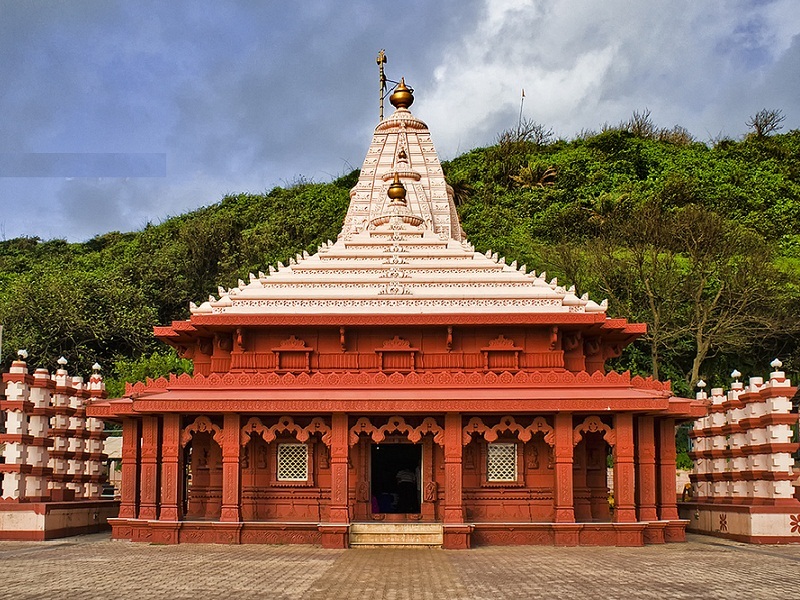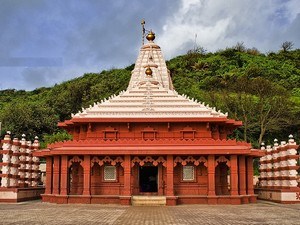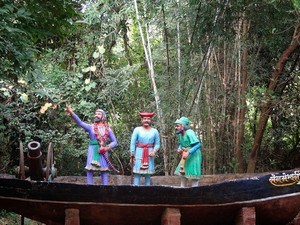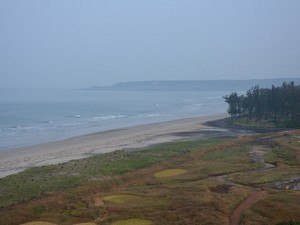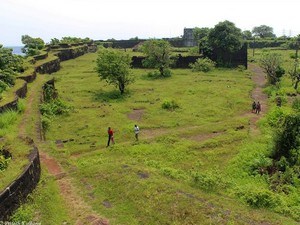Swayambhu Ganapati Temple, Ganpatipule - Timings, Festivals, History, Darshan, Pooja Timings
Photo Credit: Flickr
 #2 of 16 Places to Visit in Ganpatipule
#2 of 16 Places to Visit in Ganpatipule
 Distance (From Ganpatipule Bus Stand): 1 Kms
Distance (From Ganpatipule Bus Stand): 1 Kms
 Trip Duration (Including Travel): 30 Mins - 1 Hr
Trip Duration (Including Travel): 30 Mins - 1 Hr
 Place Location: On Ganpatipule Beach
Place Location: On Ganpatipule Beach
 Transportation Options: Walk/Trek
Transportation Options: Walk/Trek
 Travel Tips: None
Travel Tips: None
About Swayambhu Ganapati Temple
At a distance of 1 Km from Ganpatipule Bus Stand, Swayambhu Ganapati Temple is an ancient temple situated on the Ganpatipule Beach in Maharashtra. It is one of the popular Ganesh temples in Maharashtra, and among the mus-include places in the Ganpatipule tour packages. The Ganpati Temple is about 400 years old that draws thousands of pilgrims every year to seek blessings of the Lord.
History of Swayambhu Ganapati Temple
This revered site has been in existence for nearly four to five centuries. Originally, the Ganpatipule temple was adorned with grass, where Balbhat Bhide he worshipped the idol of Lord Ganesha. Over time, significant enhancements were made during the rule of the Maratha leader Chhatrapati Shivaji Maharaj, who oversaw the construction of a dome over the Sri Ganpatipule Ganpati. Subsequently, during the Peshwa era, the temple underwent further improvements, including the gilding of the dome and the installation of a Nandadeep (eternal lamp), along with the erection of robust stone structures. The current temple structure was built between 1998 and 2003 by JSW Group when they launched their thermal power project at Jaigad.
Mythology of Swayambhu Ganapati Temple
The Swayambhu Ganapati Temple in Ganpatipule, also known as Ganpatipule Mandir, is a 400-year-old temple dedicated to Lord Ganesha, featuring a swayambhu idol believed to have emerged from the earth. According to local folklore, the Hindu god Ganpati, taking umbrage at a remark made by a native lady, moved to Pule means forward from his original abode of Gule. Thus the town got its name Ganpatipule.
Architecture of Swayambhu Ganapati Temple
The Ganpatipule Ganesh temple is a prime example of pagoda-style architecture. Constructed from Agra-red stone, the temple features an impressive main entrance to the north, flanked by two large elephants with their trunks raised. A substantial Mushak structure greets devotees at the entrance, alongside the elephants. The dome-shaped sanctum and the intricately carved ceiling of the auditorium transport visitors to a different realm, especially during twilight. Furthermore, the Shri Ganpatipule Mandir is adorned with lamp pillars on both the north and south sides, which illuminate the temple at night. On Tripuri Poornima, the dazzling decorations captivate all who behold them.
The main attraction of the temple is the idol of Lord Ganesha, crafted from white sand and standing about 4 feet tall. This idol faces west, earning it the titles 'Paschim Dwar-Devata' or 'Paschim Dwarpalak,' meaning Western Sentinel God. It is embellished with various ornaments and flowers, with a silver mouse positioned at its feet. Pilgrims travel from distant places to receive the blessings of this compassionate deity, finding peace in the serene environment and the profound spiritual energy that radiates from the heart of Ganpatipule.
Festivals of Swayambhu Ganapati Temple
The Ganpatipule Temple hosts a variety of festivals, with Ganesh Chaturthi standing out as the most significant. Taking place in August/September, this festival draws large numbers of visitors who come to participate in lively processions and special pujas. Additionally, other important celebrations include Magh Chaturthi, Sankashti Chaturthi, Diwali, and Gudi Padwa.
Ganpatipule Temple Dress Code & Other Restrictions
When planning a visit to the Swayambhu Ganapati Temple, it is recommended to adhere to modest clothing that covers your upper arms and legs as a sign of respect. Men are encouraged to wear a dhoti or pajama paired with an upper garment, as well as formal trousers and shirts. Women may opt for a saree, half saree, or chudidhars. It is advisable to refrain from wearing contemporary attire such as mini-skirts, shorts, and sleeveless tops while on the temple grounds.
Non-Hindus are welcome to explore the temple complex and appreciate its architectural beauty; however, access to the sanctum sanctorum may be restricted.
Swayambhu Ganapati Temple Timings
Monday: 6 AM - 9 PM
Tuesday: 6 AM - 9 PM
Wednesday: 6 AM - 9 PM
Thursday: 6 AM - 9 PM
Friday: 6 AM - 9 PM
Saturday: 6 AM - 9 PM
Sunday: 6 AM - 9 PM
Swayambhu Ganapati Temple Entry Fee
General Entry is Free
Special Darshan available for Rs. 200 & Rs. 500
Best Time to Visit Swayambhu Ganapati Temple
The best time to visit Ganpatipule Temple is from September to February while the peak season is from November to January when the weather is pleasant and conducive to exploring the temple, and its surroundings. While the area becomes greener and more vibrant during the monsoon, swimming in the sea is not advisable due to rough waters. Summer is not advisable for a visit due to the hot and humid conditions prevalent in the region.
How to Reach Swayambhu Ganapati Temple
Mumbai Airport is the nearest airport, which is about 343 Km from Ganpatipule. About 30 km away from Ganpatipule, Ratnagiri Railway Station is the nearest railhead that has train connectivity with Mumbai, Goa, Patna, Pune, Kochi, Trivandrum, Delhi, Mangalore, Tirunelveli, Bikaner, Amritsar, Dehradun, Chandigarh, Kochuveli, Porbandar, Ajmer, Coimbatore, and Madgaon. Ganpatipule is well connected by bus with Ratnagiri, Mumbai, Pune, and Kolhapur.



